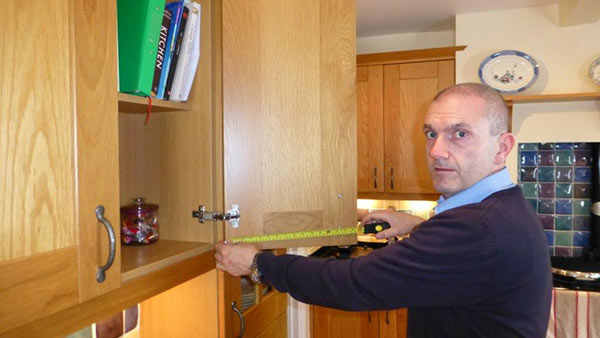If you have decided to get new kitchen doors in a bid to save a little money and still get great results for your kitchen, the last thing you will want to do is pay for a tradesman to come and fit the doors for you. Not only will you have to wait until your tradesman is able to do the job, but you could be paying in excess of £150 a day for the privilege. This will add to the cost and really isn't necessary.
Recent research has suggested that most people would rather get an expert in to help them with basic DIY tasks as they don't feel they have the right set of skills to do it themselves. However, most of us have the basic skills required to fit cupboard doors and the following tips will show that fitting replacement cupboard doors is easier than you might imagine.
- Ask your supplier to pre-drill the holes for the hinges as this will make the task even easier.
- Attach the door handle before you put it in place. Use a measure and a spirit level to ensure you have the handle perfectly positioned on all of the doors. Make a pencil mark where the screws should be and drill from the front to the back. This will prevent any damage to the lamination on the front of the door. In some cases it is wise to place a strip of masking tape over the area being drilled as this can prevent splintering. You can purchase a special jig for measuring the handle position. Screw the handle into place.
- Offer up the door to the cupboard carcass and check that the hinge holes are in the correct position. Screw the front part of the hinge into place and if you are using replacement hinges you can screw the back part to the carcass.
- Slot the front part of the hinge onto the back section. It should click into place. Try closing the door and see if it is even and level. If not you can make adjustments by tightening or loosening the hinge screws. There are usually two such screws which can adjust the doors either up and down or in and out.
- Once all of the doors are in place you should carefully check that the gaps between the doors are all even. Simple adjustments can then be made to the hinges to make them all level.
- Integrated appliance doors are attached to the appliance using screws and clips rather than hinges. Generally these come with the appliance, so you will need to remove them from your old doors.
- Cornices and pelmets can be a little more difficult to get right. Corners will need to be cut on a mitre to achieve a neat edge. A special jig can be purchased to make this easier. A local tradesman will be able to do this for you within a couple of hours if you think it might be too tricky.
- Finally a plinth simply needs to be cut to size. Usually they attach to the bottom of the units via a series of plastic clips.
- You may also decide to use end panels to finish off the look of your kitchen. They will screw into place and any screw holes can be covered with plastic plugs in the same colour as the unit. You could also use glue to fit the end panel.
While this may sound like a lot to take in, it is actually a very easy job and you will have so much satisfaction from completely changing your kitchen at a minimal price and in record time.
For advice and tips on how to measure and replace your kitchen doors check out our online guides


